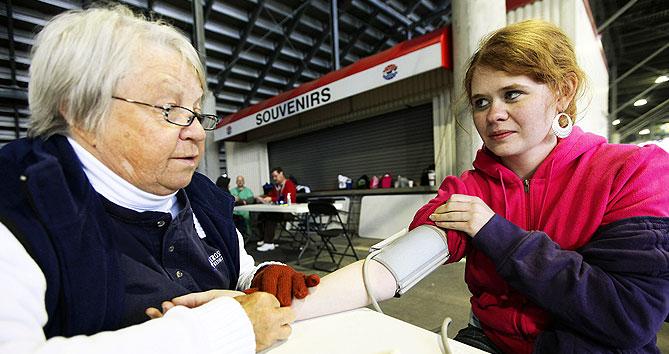Raising the minimum wage is a matter of public health

Poverty is all around us. It reaches into some of our own lives. We see it in parents with inadequate retirements, in debts from healthcare and student loans, and as a result of mortgages in excess of housing values.
Here in New York State, results are glaring: At more than 15%, the 2012 poverty rate for NYS residents sat above the national rate. The poverty percentage for children under 18 in NYS was 21.2% – more than one in five. In New York City, 46% of residents were living at or near poverty! This appalling fact underpins the characterization of New York City as the Inequality Capital of the USA.
Low wages dominate
Underlying it all is one basic shortfall: low wages.
Job growth is almost entirely in the low-wage sector. High-wage positions, such as in accounting and law, are in decline. Meanwhile, the country added almost four million new jobs in the low-wage sector in recent years. While corporate profits are surging to new highs, wages in 2013 made up the lowest percentage of the overall economy on record.
Poverty doing us in
Overall, according to CNN, the median wage earner in the U.S. took home 9% less last year than in 1999, while after-tax corporate profits soared to a record-high $1.68 trillion in 2013.
How does this profound economic inequality impact our patients and communities?
For one, poverty and near-poverty serve to block access to health services. Many insurance plans are not affordable in a low-wage society, especially when co-pays and deductibles are factored in.
Pervasive poverty has profound healthcare effects. The heart attacks suffered by younger Americans, gut disorders we see among children, and increases in anxiety and severe mental illnesses in Americans of all ages are linked to the stresses of poverty and demise. Suicide rate increases have been shown to be a result of job loss and home foreclosure.
Even access to fresh foods – greens, fruits, fish – is limited in low-wage communities. The makeshift farmers market sells out early on Tuesdays in the South Bronx, as demand for affordable fresh products far outstrips supply. (It is here that the myth – that low-income families do not want fresh foods – is debunked.)
The lack of fresh quality food at affordable prices is devastating our population. Take diabetes. Poor diet is the leading cause of this illness, which in 2012 afflicted 29 million Americans, some in New York, according to the American Diabetes Association.
Of the families with children who report hunger during the last 12 months, 68% contained at least one adult working full-time, according to the U.S. Department of Agriculture. We need to break the link between full-time work and hunger.
Unions fight low wages
Unions are united in New York to fight low wages. NYSNA and our allies in labor and other supporters pressed Albany to raise the state minimum wage and to up it again over the next two years. We need to keep going.
Low wages and the pervasive poverty they cause have created an overwhelming and growing public health crisis in our state and around the nation. Worst are the healthcare disparities we see every day. We cannot close the gap on these disparities without paying New Yorkers enough to keep them out of poverty.
We know that union wages set a pay standard for all of society. That's one important reason for all union members to hold the line. We must also be united in our support of all wage demands of these workers. Pushing harder on minimum wages, supporting living wage movements, giving a nod to cities that seek local laws to raise minimum wage standards… all these efforts add up. Decent pay is critical to the health of the workforce.